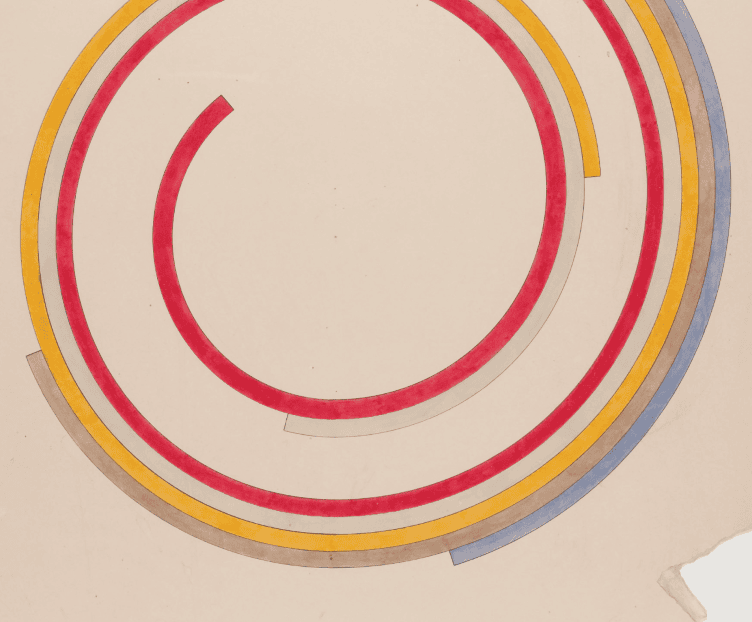This resource was developed in 2004 as part of “Biafra, Nigeria, the West and the World” by David Trask.
My memo reverses the order of the evaluation proposal. I do a lot of reflecting on the front end and then address the specific questions toward the end of this statement.
My original hope for this project was to promote a greater student sense of historical thinking rather than inculcating a specific body of knowledge. Part of this effort was to make students aware of the historical world that lay beneath their initial, surface impressions that, for many of them, are all there is to the past. To achieve this I tried to combine aspects of electronic technology with primary sources on a topic unfamiliar to students but present in a general way in most textbooks-decolonization and its aftermath. I think I have been successful at this task although I have had to work through a lot of issues in my mind to reach this conclusion. A key element in reaching this conclusion has been to work out alternative definitions of “success” in the professional and specific academic setting where I teach. What is “success” in terms of a history project in the eyes of professional historians and what is “success” at an open admissions college with a 50% failure rate? In short, I think I developed a good project from the standpoint of the goals of teaching historians and students who are truly transfer material (they will finish a significant amount of work at GTCC and successfully transfer). I do not see at this juncture that this project addresses the needs of marginal students with little goal orientation who need to acquire study skills, direction, work habits and so on. In other words I do not think my project breaks new ground for historians seeking to advance traditional open-admission, community college goals.
A related goal was to work with a largely unfamiliar field to gain a sense of the problems that teachers might encounter when trying to master the history of vast stretches of history they will have to deal with in order to move from western to world civilization courses. I have a more mixed reaction here because I only worked with one small element of the vast field of African history. And, to date, no expert in African history has reviewed this work.
Assumptions/Issues Underlying Project
This project has caused me to rethink many issues related to history instruction: 1) the general issues of what we think we should try to accomplish in the survey course, 2) the underlying issue of what electronic media mean for the understanding of history, and 3) what historians at community colleges can and should try to accomplish.
- I start with (and for the moment continue with) the general goal of trying to accomplish the types of tasks laid out in the “guidelines for project evaluation.” I try to instill some habits of historical thinking, some elements of methodology, and some concrete historical knowledge. But in making these traditional statements, I am assuming that historical understanding in the world of electronic media will remain essentially the same as in the age of print. In the long run I am not certain this will be true. My paper for the AHA, “Did the Sansculottes Wear Nikes?” is a good indicator of the range of my concerns on this issue.
- If the ends of historical study remain unchanged, then the electronic age seems to promise at least a change in classroom activity. Many historians and others see the new classroom as structured around a “learning to learn” model rather than a “transmission of knowledge” approach. I tried to put this new element into my project with the assumption that members of the class would read different primary sources and then share their findings with others and thereby develop both an awareness of thought processes and the ability to do focused work (stay on task) with groups of classmates. At the end of this project I feel that we may be overstating student interest in collaboration. While they like the idea of collaboration and the idea that their opinions will be respected (and not subjected to scrutiny), they also seem to be card carrying members of consumer society. This last point means that at least in portions of their lives that want “recipe knowledge” which they can memorize and restate for credit. The working out of the relationship between collaborative approaches to learning and the ease implied by customer-friendly learning is not clear in my mind–although I have a lot of “customers” in my classes.
- What is success at a community college–or at least at this one? What is the minimal competency in skills and knowledge that students should attain before receiving college credit in a survey course? This project–the introduction of a new means to achieve the traditional ends of an academic discipline–assumed that these logically prior issues have already been addressed and laid to rest. At least at this college and in my mind, the issue of where the distinction lies between good college outcomes and deficient work is still up in the air.
GTCC is a community college where the entire college transfer program experiences a 50% drop out rate. Faculty are cajoled to reach as many as possible and some faculty have received memos about the need to improve their retention/successful completion rates–or be gone. In this setting–and partly from my own tendencies–I hope for (more than work for) higher success rates. For this reason my initial focus on my classes at the end of the course is in terms of the people I “lost” along the way rather than the (few) really excellent students and the many “OK” to “pretty good” folks we do encounter. I “hope” rather than “work” for retention because the college advertises that we offer the first two years of college and that students can transfer as juniors and be on a par with students at receiving universities. I do not feel that it is professional (as a historian) or appropriate (as a recipient of the taxpayer dollar) to pass students whose work is significantly below college level performance. One of my initial hopes for this project was that it would connect with previously “unreached” groups of students and enhance the number of successful students at the end of the course. I did not achieve that goal.
Specific Problems
- I confused computer availability with willingness to work on a computer. I asked for a journal entry on student familiarity with computers and tried to work with those who were unfamiliar with the technology. In truth, very few fell into that category. If their claims were correct, it was willingness rather than ability with computers that was the problem. We have a lot of students who only do school work within very confined time frames and would not go outside these time parameters to use any of the college’s 50-60 computers with online capability. Many of the students who did use their computers simplyh printed the relevant pages for their reading assignments and did not otherwise resort to the computers. Some got xerox copies of the assigned readings from those who did work online. These approaches sank my efforts to move discussion outside of the classroom and into bulletin board discussion groups. Discussions took place in class, face to face.
- We had seven snow days early in the spring semester when this project was given its fullest test run. When the college’s calendar was restructured for make-up days, we found that we had originally scheduled more class days than legally required by the state. So the revised calendar only provided enough make-up dates to meet the state-mandated minimum days of instruction. Therefore I found I had lost the equivalent of a week and a half of Tuesday/Thursday classes and a week of MWF classes. This created a scramble to cover material and put the whole semester into turmoil and created a reduced amount of time for the project.
- There are a significant number of students who work only to specific, graded activities. Because the journal was only graded at the end of the project, a number of students did not participate in the cycles of reading and reflection that were actually the core of the project. And they tried to shirk the reading, take notes on discussion, and write a series of statements addressing journal topics in a single sitting.
Attempted Too Much?
It is tempting to say that I tried to do too much during the term with this project. And, indeed, I did combine a lot of different new elements into my instruction at the same time. But what measure or level of success is appropriate for my classes? If I didn’t “rescue” additional students, should that be held against the project? If the learning methods and goals are appropriate to the new age of electronic media, then their failure to master the material in the project can still be held against students who cannot or will not work at an appropriate level for transfer credit. So I guess I am giving myself a “pass” on the issue of attempting too much even though the project failed to attain a goal that this college sees as central to its mission.
Successes
When I focus only on my successful students (those who earned transferable A’s, B’s and C’s, I am very happy with this project. I had students who went beyond the basic requirements and did additional reading, got classroom participation from some who had largely been quiet, got some students who went into real depth about the issues of the post-colonial world, and a lot of students who hadn’t known about all of that “stuff” from the recent past. This last group can be subdivided into two elements–those who enjoyed studying a topic outside the traditional mainstream of western civilization and those who did see that the more you worked into a topic, the more complex and interesting it became. This was the measure of success that was most important to me in the long run. These observations were validated by the students final, evaluative journal entries.
What to Do Differently Next Time
- reduce the quantity of reading (a lot of this done in the materials transmitted to AHA in June;
- start the project earlier in term with longer intervals between assignments;
- interim grades on the journal or some other way to monitor work to see that it is done as we go along;
- gain a clearer sense of how to manage collaboration among students and to promote discussion outside class time;
- re-emphasize the role of questions to heighten student awareness of this feature of my original plan.
Final Conclusions [where I address some of the specific issues raised in the evaluation format]
The primary sources I used were very useful. Most of my previous use of them has been either exemplar documents (selections from Locke’s Second Treatise, e. g.) or selected documents from readers at the rate of one or two unrelated documents per topic. Using a large concentration of documents on a single topic gave students an immersion in historical reflection that they usually do not get. This is not of course a special trait of an electronic approach to historical study–the posthole approach has been around for a long time.
Although I can regard the technology as “neutral” in some aspects of the course, electronic connnectivity did help in others. Some of what I have put online could somewhat easily appear in a Kinko’s coursepack. But I also had some connections to materials “out there” in cyberspace that would not have been part of a course pack and I was able to create more juxtapositions of materials that would be possible in a course pack. Ultimately the promise of bulletin boards with discussion threads should add a new dimension to the course. Furthermore some students were attracted to the computer-based study even if it may not have offered a truly new dimension to learning. I don’t know if the feature of working from the near present back into the past actually required electronic media but I do not that the computer authoring tools made this part of the project easier to conceive and develop.
My approach probably did not convey content more effectively than a pure, straight forward lecture approach would have. However the approach used in this unit did promote a greater awareness of how historians construct their understandings of the past and how the past is more complex than students realize. Teaching historians must be supported in their efforts to promote historical thinking skills because they do seem wasteful uses of time as long as the acquisition of the content is the litmus test of teaching effectiveness.
Although I did introduce the role of questioning as an important activity of historians, I did not make as much explicit use of this feature in the course.
I hope these comments are helpful. I will be happy to expand on any of these points or to answer additional questions on the project.
David S. Trask


